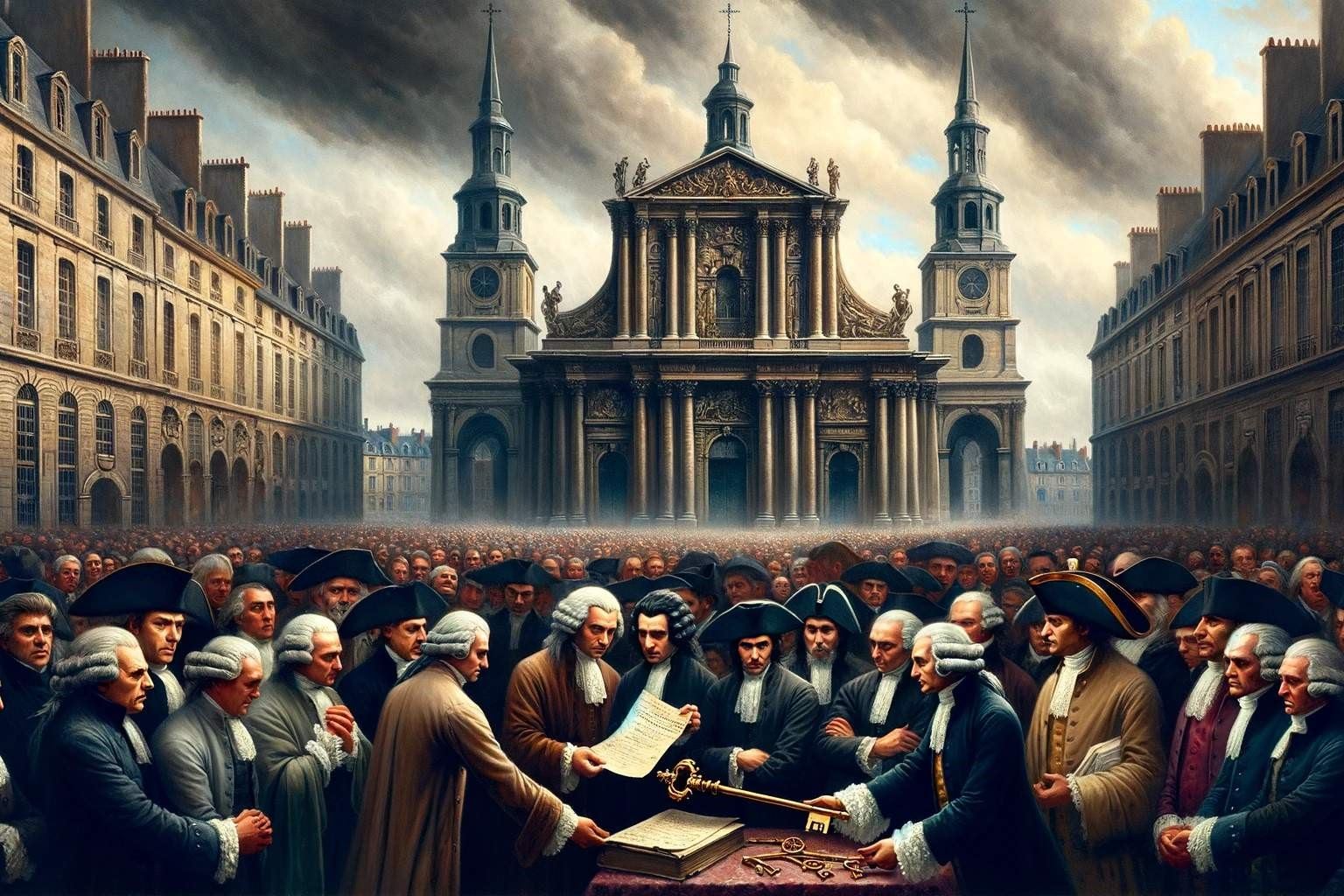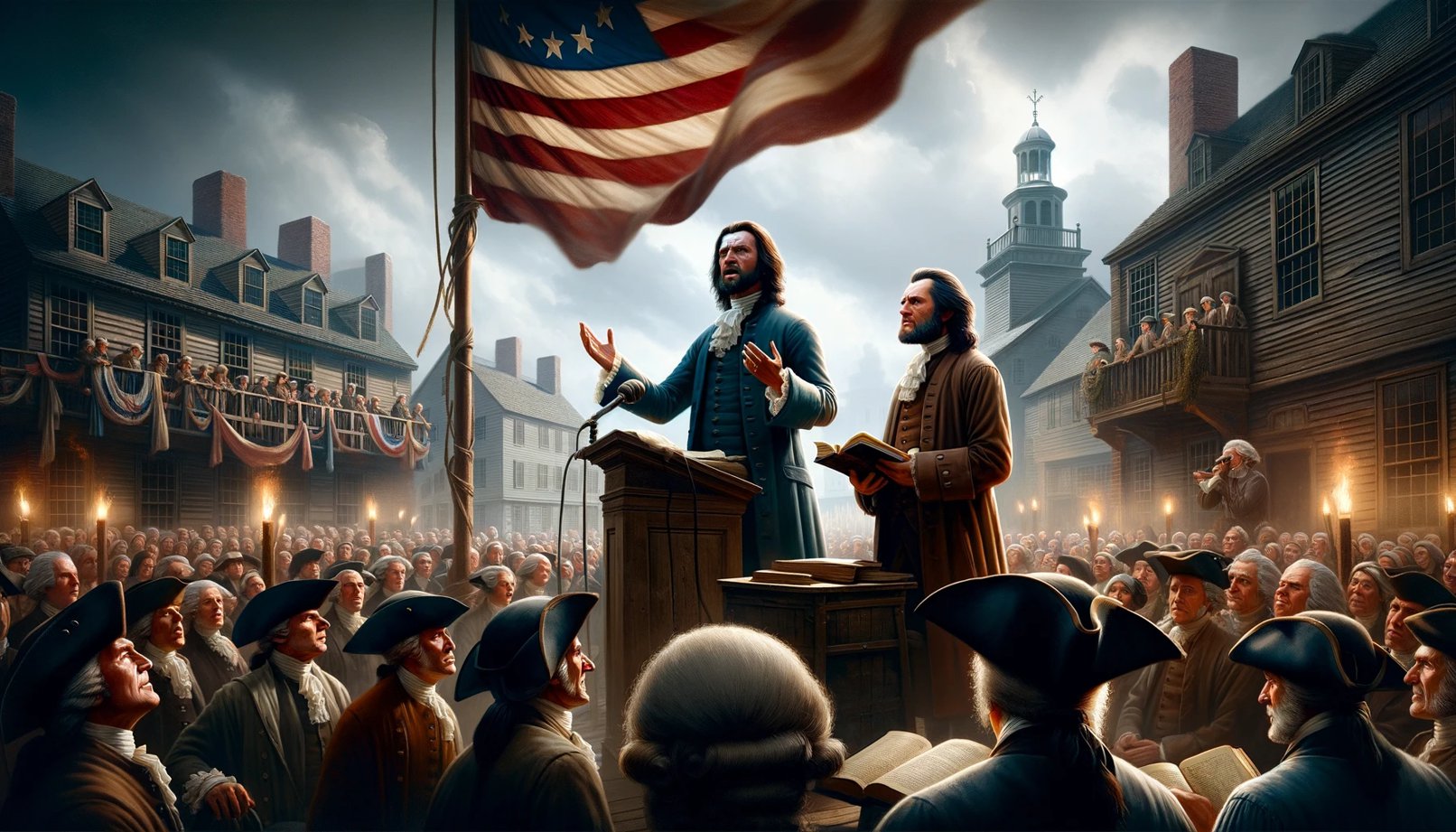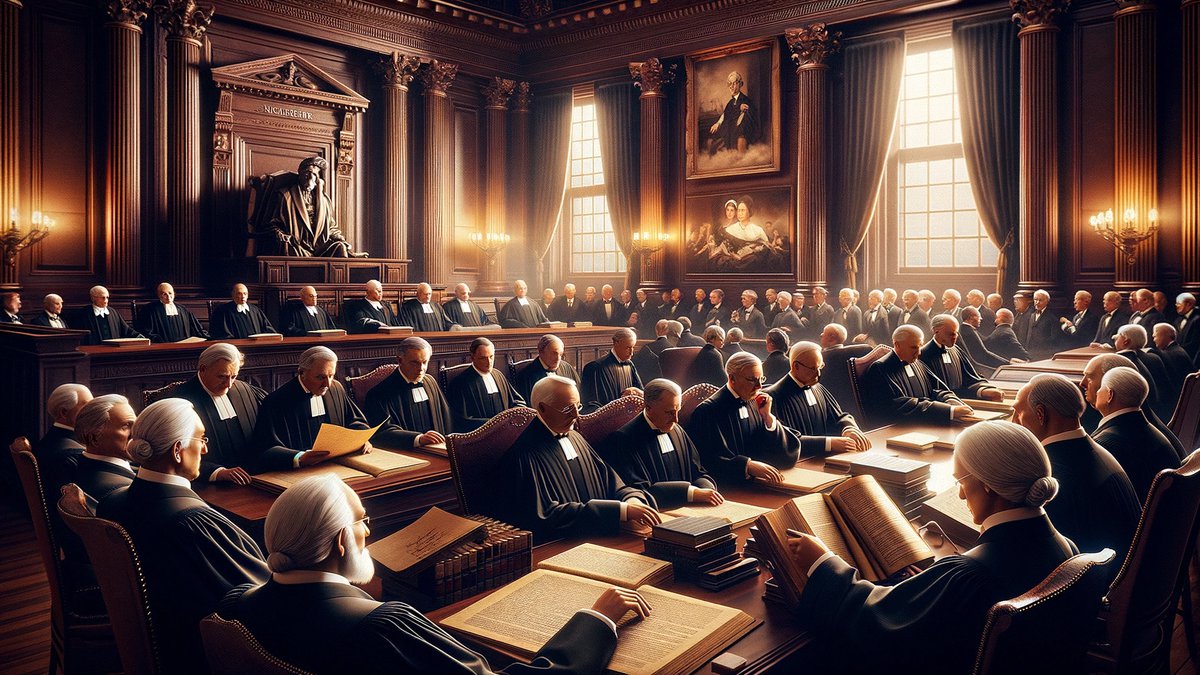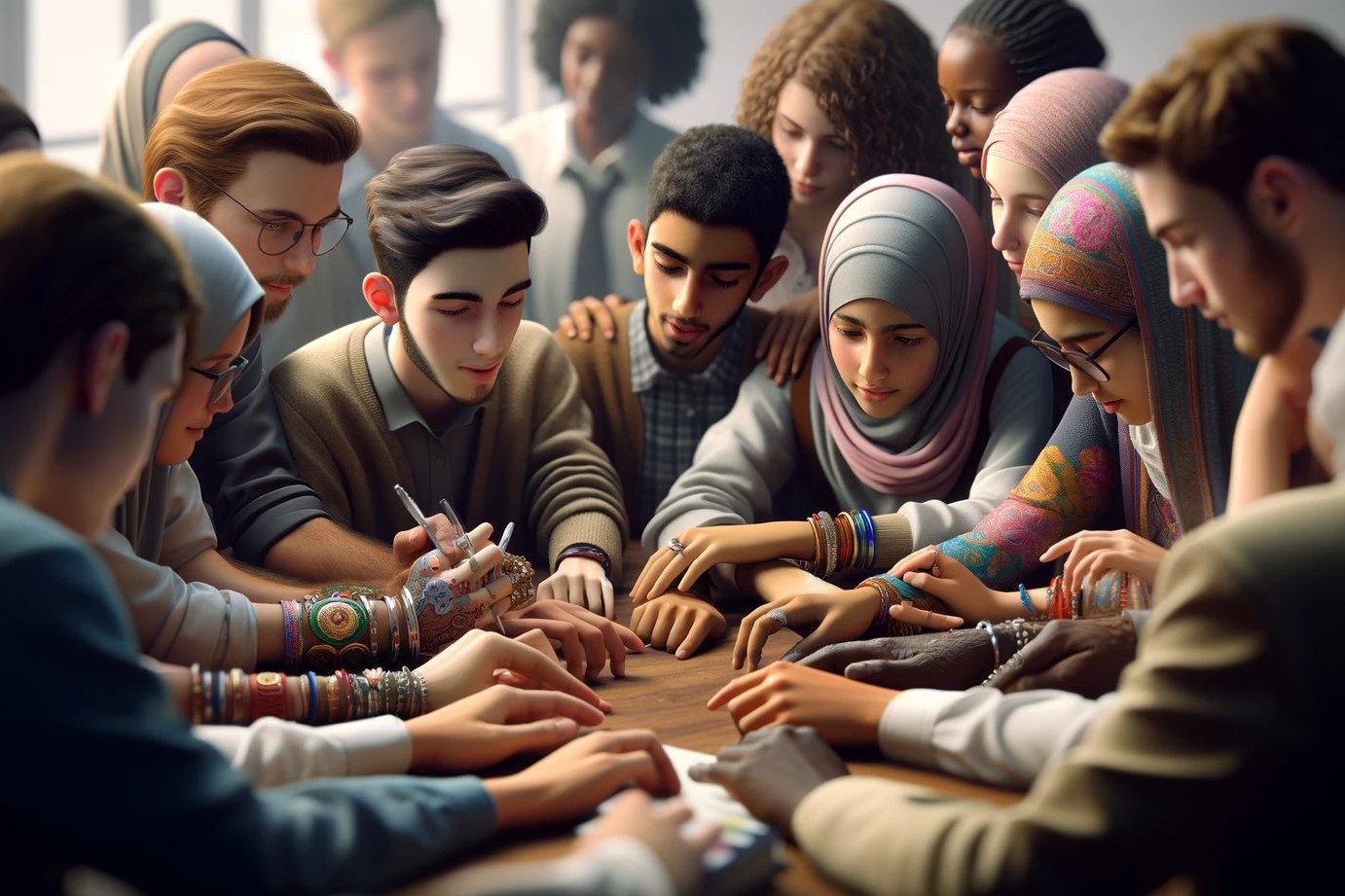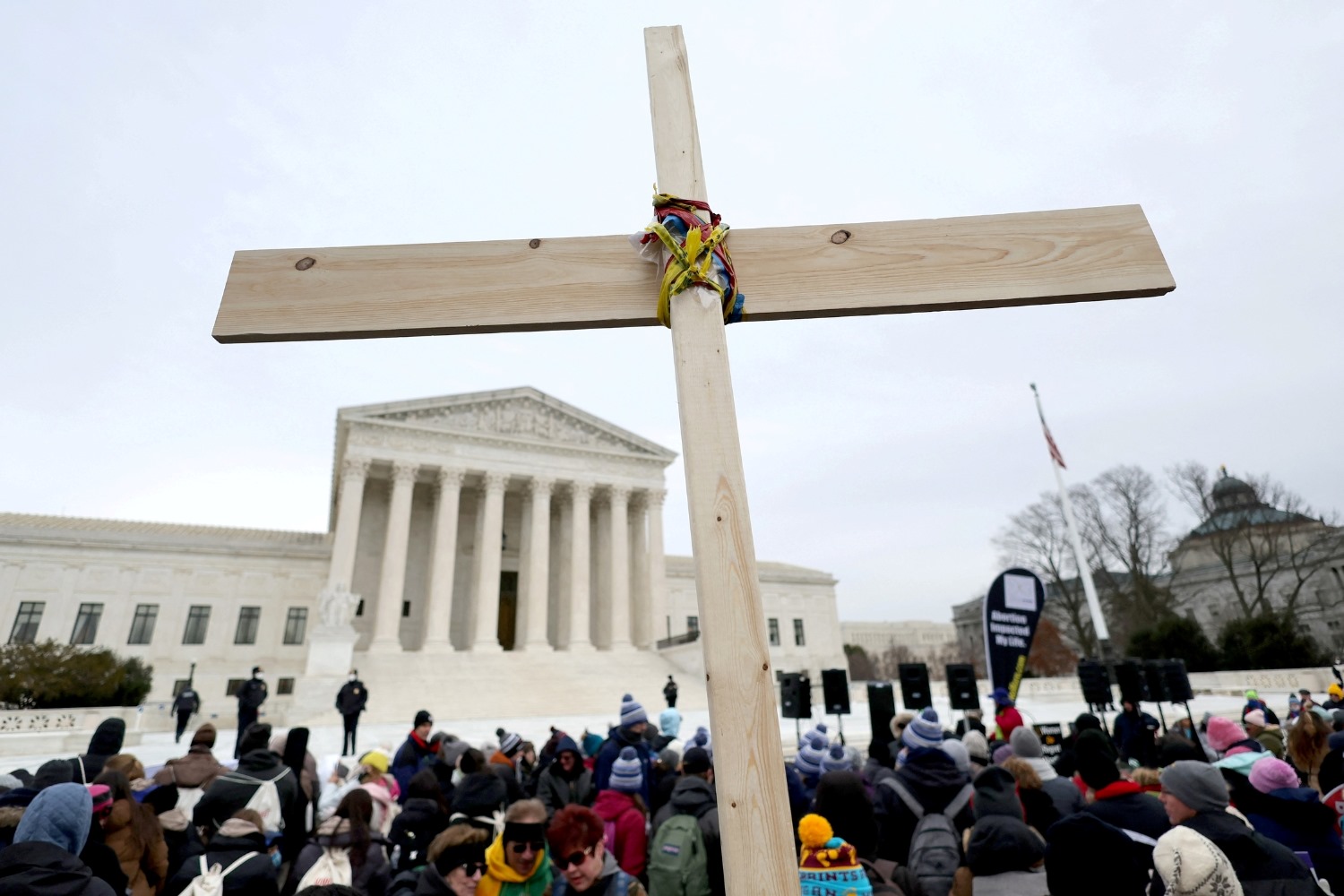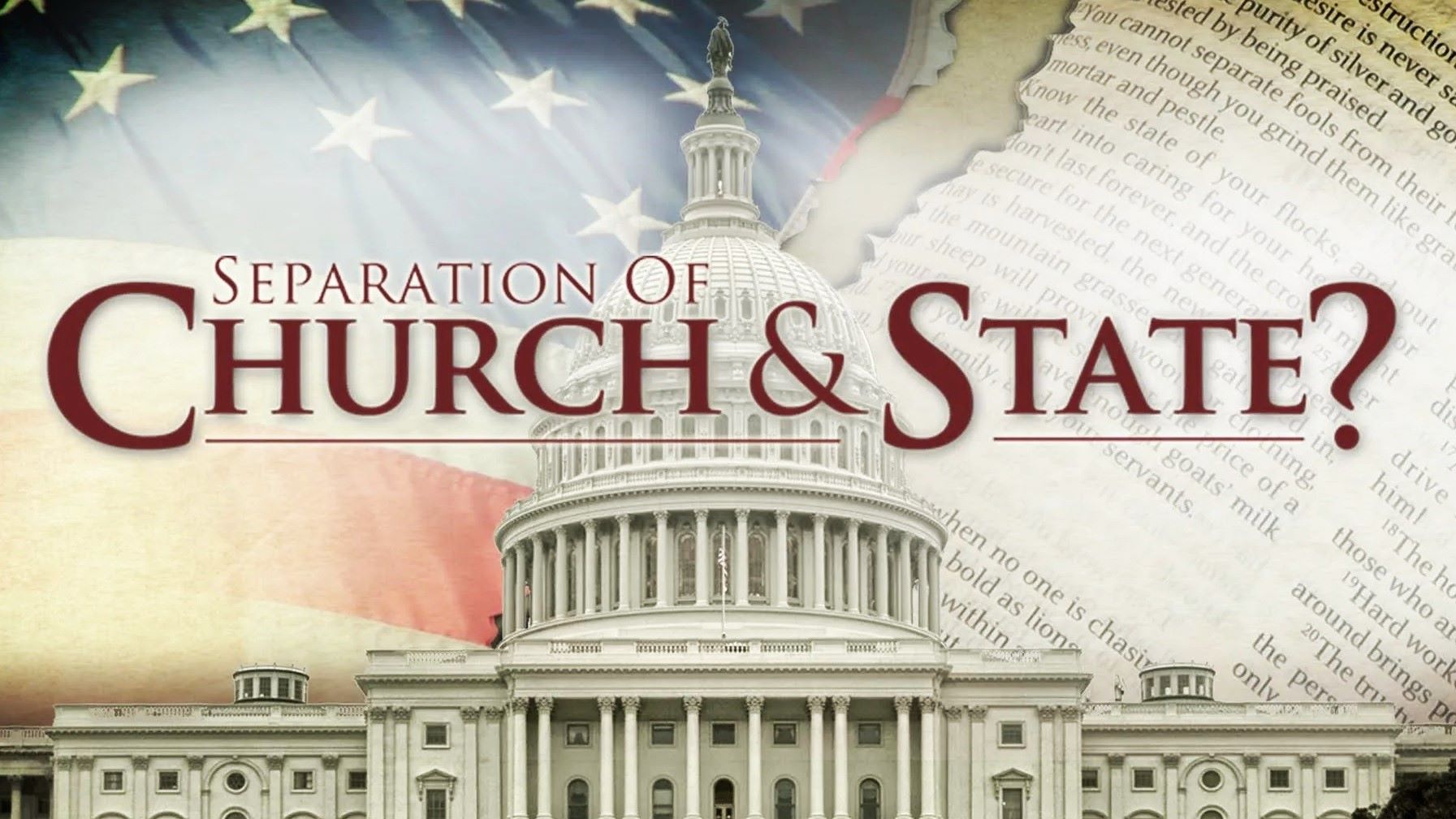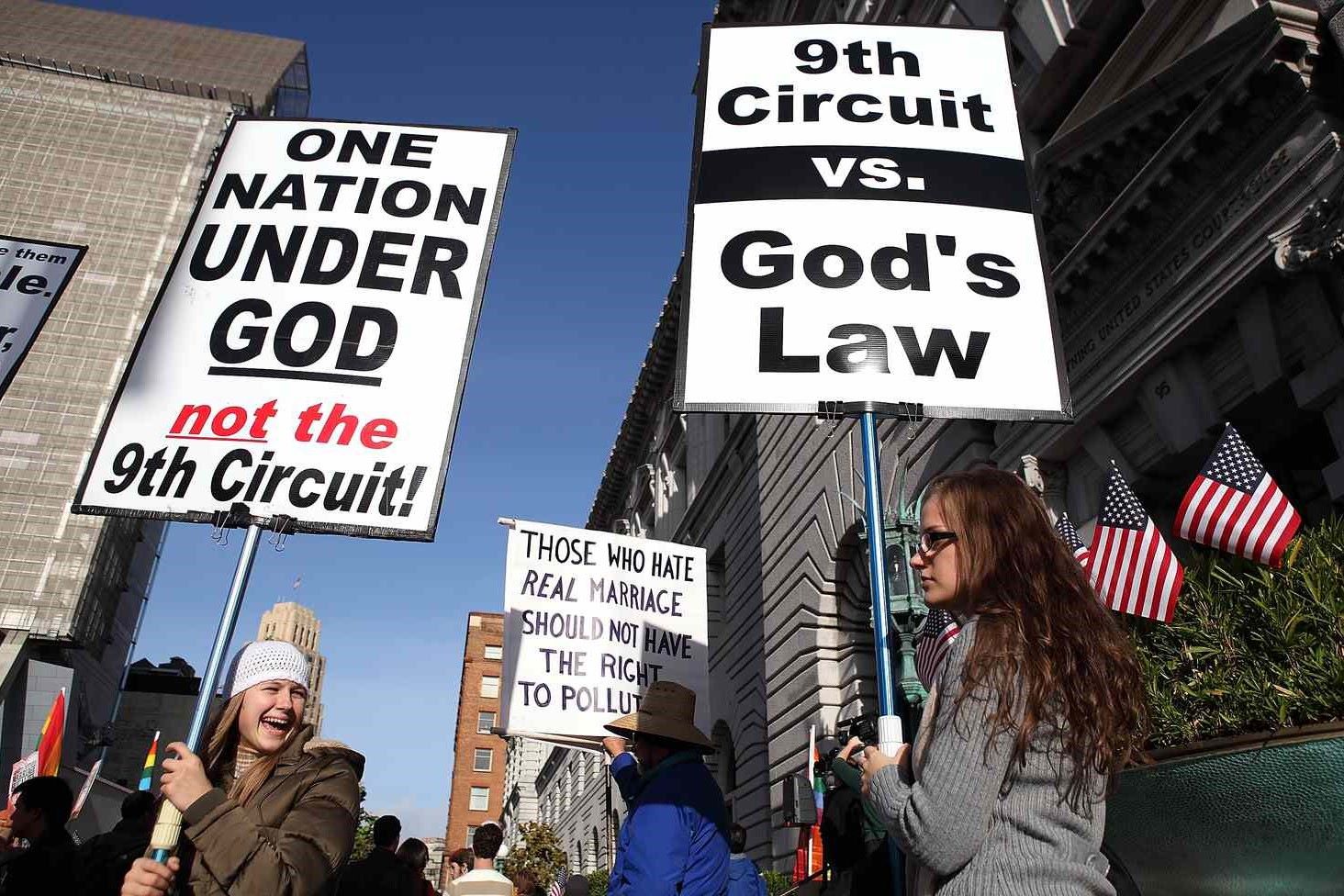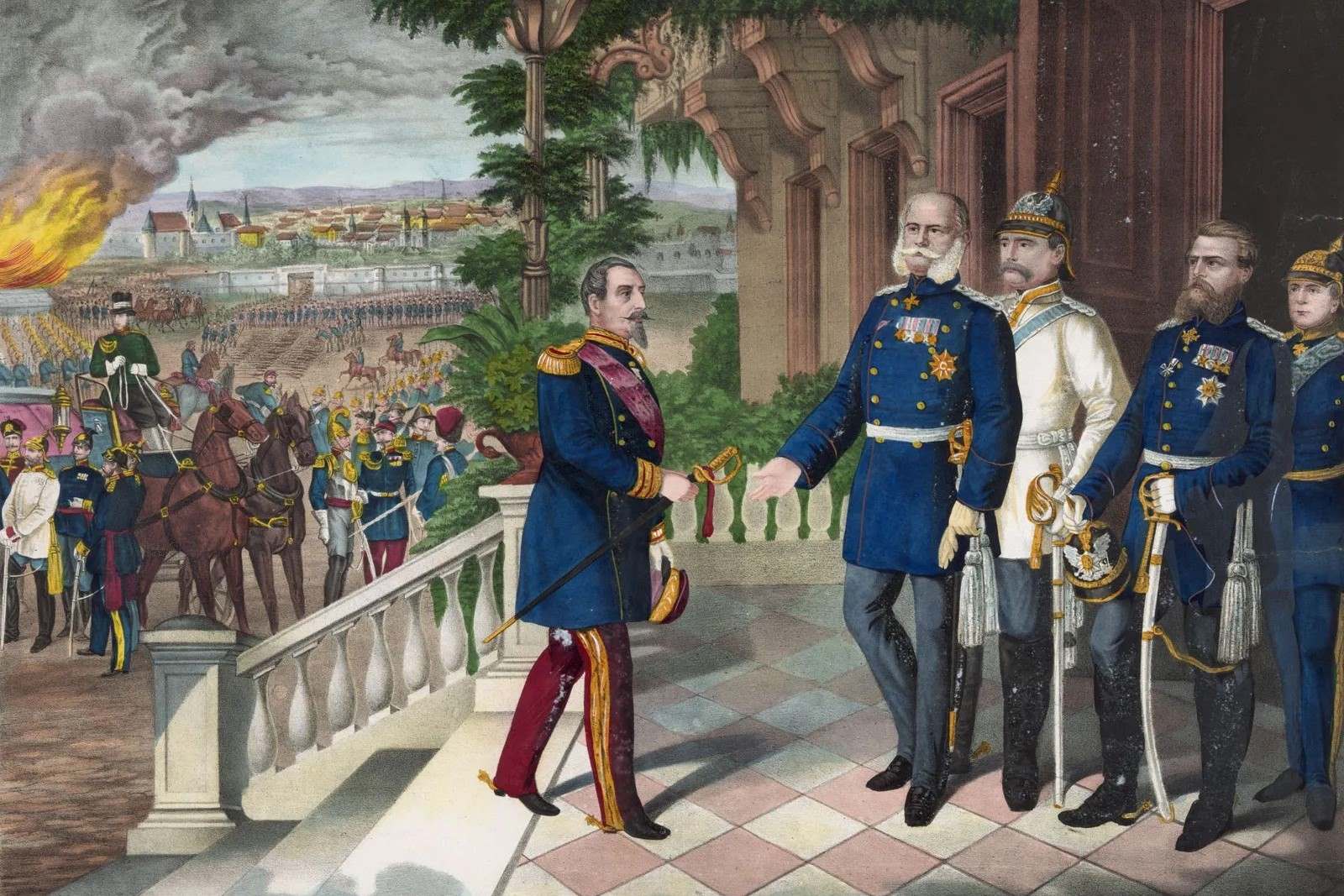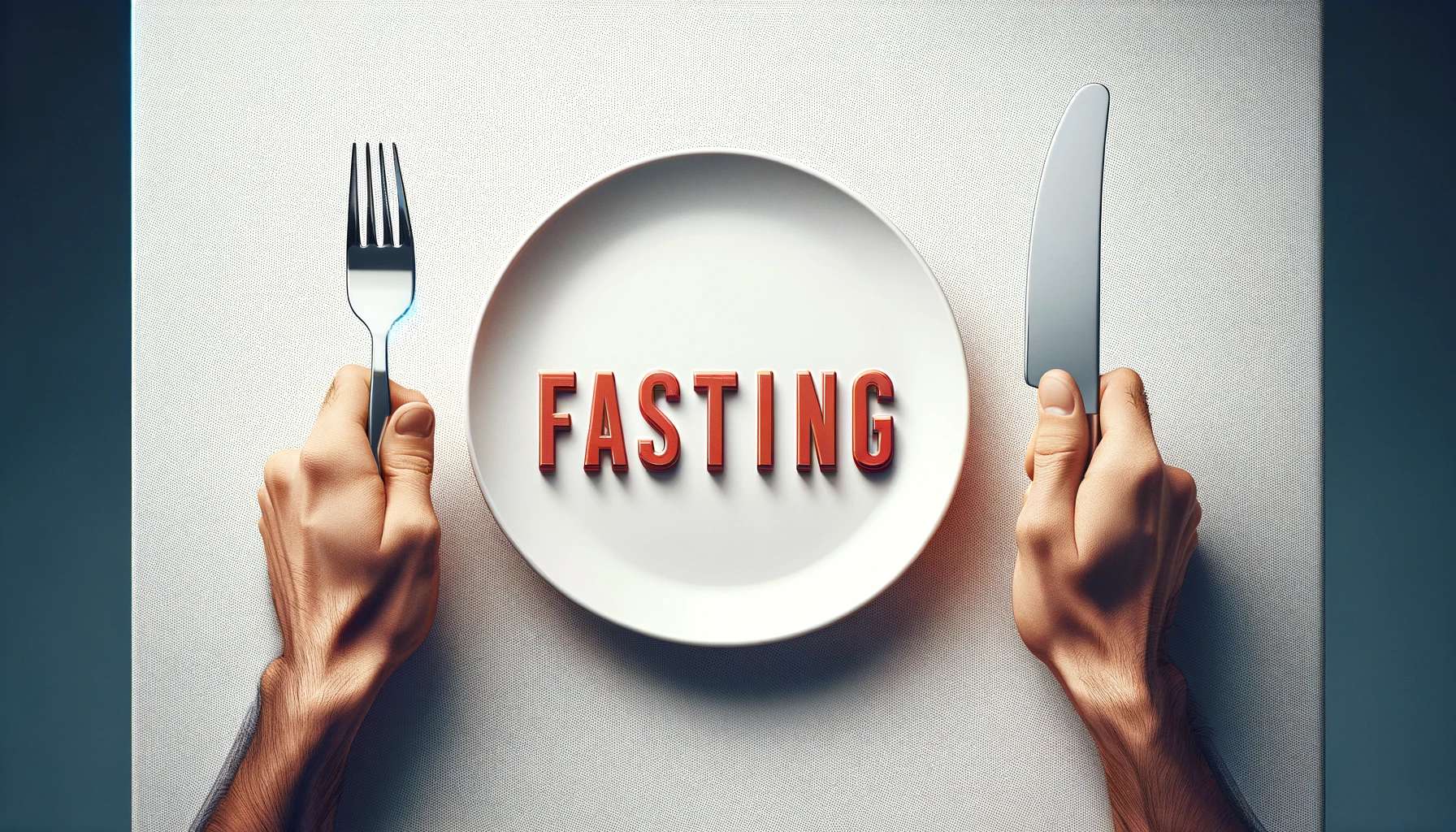Home>Theology and Spirituality>How Did The Church And State Compete For Power During The Middle Ages
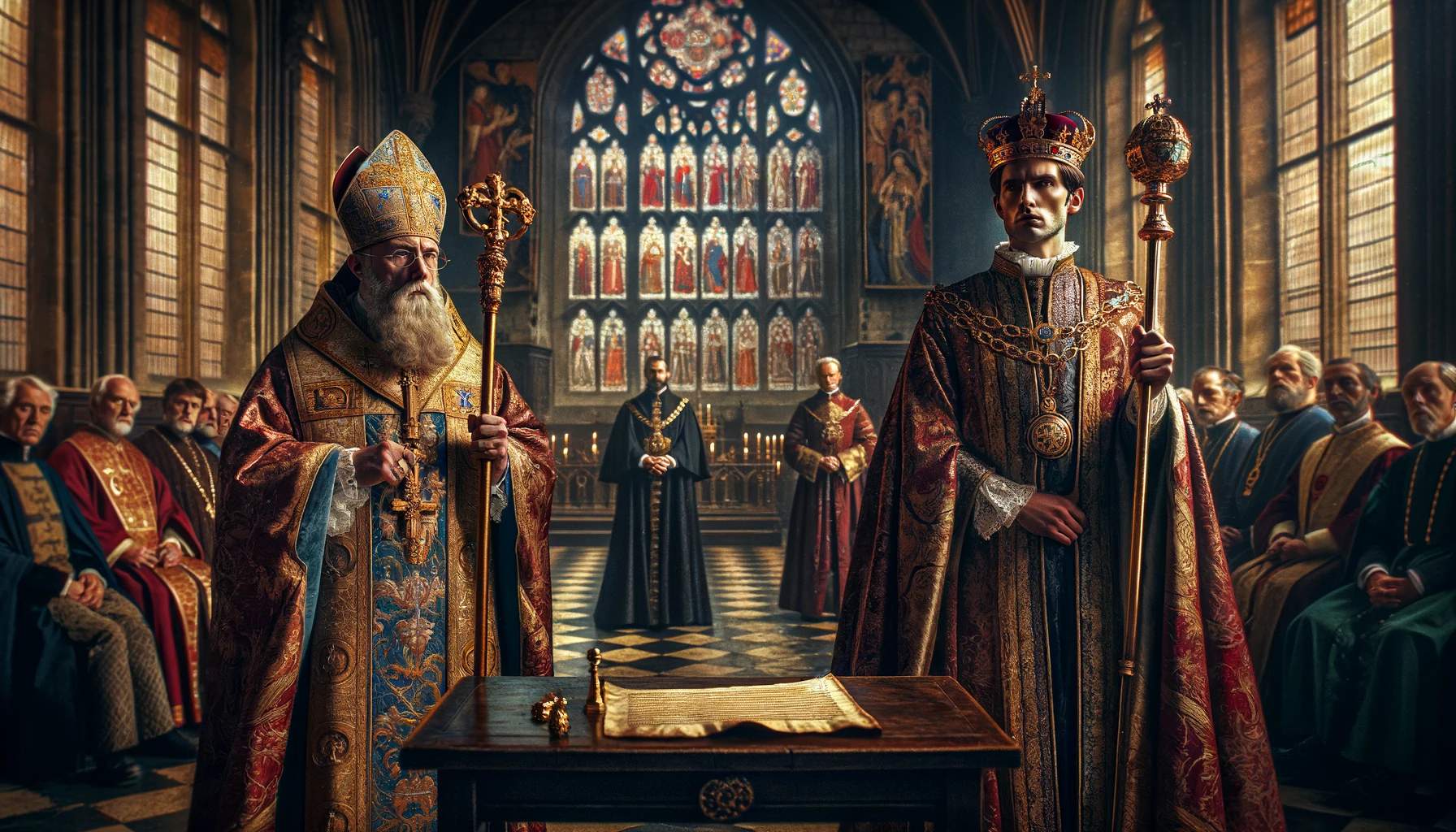

Theology and Spirituality
How Did The Church And State Compete For Power During The Middle Ages
Published: February 11, 2024
Peter Smith, Editorial Director at Christian.net, combines deep insights into faith, politics, and culture to lead content creation that resonates widely. Awarded for his contributions to religious discourse, he previously headed a major organization for religious communicators, enhancing dialogue on faith's societal impacts.
Discover the power struggle between the Church and State in the Middle Ages, exploring the dynamics of theology and spirituality. Explore the competition for influence and control during this pivotal historical period.
(Many of the links in this article redirect to a specific reviewed product. Your purchase of these products through affiliate links helps to generate commission for Christian.net, at no extra cost. Learn more)
Table of Contents
Introduction
The Middle Ages, often referred to as the medieval period, was a time of profound societal transformation in Europe. This era, spanning from the 5th to the 15th century, witnessed a complex interplay of power dynamics between the Church and the State. The struggle for dominance and influence between these two entities shaped the political, social, and religious landscape of the time.
During this period, the Church, represented by the Catholic Church in Western Europe, held immense sway over the hearts and minds of the people. It was not only a religious institution but also a formidable political force, exerting significant control over various aspects of daily life. Simultaneously, the State, comprising feudal lords, monarchs, and governing bodies, sought to consolidate and expand its authority over territories and subjects.
The competition for power between the Church and the State was a defining feature of the Middle Ages. This struggle was characterized by intricate alliances, conflicts, and negotiations as both entities vied for supremacy and sought to shape the course of history. The resulting power dynamics had far-reaching implications, influencing governance, law, social structures, and cultural norms.
In this article, we will delve into the intricate relationship between the Church and the State during the Middle Ages, exploring the rise of their respective powers, their influence on politics, the state's efforts to assert authority, the conflicts and power struggles that ensued, and the profound impact of these dynamics on medieval society. By examining this historical interplay, we can gain valuable insights into the complexities of power, governance, and societal dynamics that continue to resonate in contemporary contexts.
Read more: What Does Notre Dame Reveal About The Relationship Between Church And State In The Middle Ages?
The Rise of the Church and State
During the early Middle Ages, the power dynamics of Europe were undergoing a significant transformation. The Church, particularly the Catholic Church in Western Europe, began to ascend as a dominant force, wielding substantial influence over both spiritual and temporal affairs. This rise was propelled by several key factors.
The Church's ascendancy was rooted in its role as the primary religious institution of the time. It provided spiritual guidance, administered sacraments, and held sway over matters of faith and morality. As Christianity became deeply ingrained in the fabric of medieval society, the Church's authority extended beyond religious realms, permeating into political and social spheres.
Simultaneously, the State, comprising feudal lords, monarchs, and governing bodies, was consolidating its authority over territories and subjects. The feudal system, characterized by a hierarchical structure of land ownership and vassalage, allowed feudal lords to exert control over vast domains, often in a decentralized manner. Monarchs sought to centralize power, expand their territories, and establish their sovereignty over disparate regions.
The relationship between the Church and the State was complex and multifaceted. The Church, with its extensive network of monasteries, cathedrals, and dioceses, wielded significant economic and political influence. It held vast land holdings, collected tithes, and played a pivotal role in shaping the economic landscape of medieval Europe. Moreover, the Church served as a unifying force, providing a sense of cohesion and stability in an era marked by political fragmentation and upheaval.
As the Church and the State rose to prominence, their spheres of influence intersected and overlapped. The Church's moral authority often intersected with the State's exercise of power, leading to intricate power dynamics and occasional conflicts. This convergence of spiritual and temporal authority set the stage for a protracted struggle for dominance, as both entities sought to assert their primacy in shaping the course of medieval society.
The rise of the Church and State during the Middle Ages laid the groundwork for a complex interplay of power dynamics that would unfold in the centuries to come. This ascent set the stage for a profound and enduring struggle for supremacy, shaping the political, social, and religious landscape of medieval Europe.
The Church's Influence on Politics
The Church's influence on politics during the Middle Ages was profound and multifaceted, permeating every aspect of governance and societal organization. As the dominant religious institution of the time, the Catholic Church wielded significant power and played a pivotal role in shaping political structures, decision-making processes, and the moral fabric of medieval society.
Spiritual Authority and Political Legitimacy
The Church's influence extended into the realm of political legitimacy. Monarchs and rulers sought the Church's endorsement to legitimize their authority, often seeking coronation and blessing from religious authorities. This symbiotic relationship between the Church and secular rulers conferred a sense of divine sanction upon the political leadership, reinforcing the notion of the "divine right of kings." The Church's support lent crucial legitimacy to rulers, bolstering their political standing and quelling potential dissent among the populace.
Legal and Judicial Framework
The Church also exerted influence over the legal and judicial systems of medieval Europe. Canon law, the legal system of the Church, held sway over matters such as marriage, inheritance, and moral conduct. Ecclesiastical courts operated in parallel with secular courts, adjudicating disputes and enforcing moral codes based on religious doctrine. The Church's involvement in legal affairs not only shaped the administration of justice but also reinforced its authority in regulating societal conduct.
Moral Guidance and Social Order
Beyond formal governance structures, the Church's influence permeated the fabric of daily life. It provided moral guidance, shaping societal norms and ethical standards. The clergy served as moral arbiters, guiding individuals and communities on matters of conscience, virtue, and sin. The Church's teachings on salvation, morality, and the afterlife profoundly influenced the behavior and beliefs of the populace, contributing to the maintenance of social order and cohesion.
Economic and Territorial Influence
The Church's influence extended to economic and territorial realms as well. Through its vast land holdings, tithes, and economic activities, the Church wielded considerable economic power. Monasteries and abbeys served as centers of agricultural production, trade, and education, contributing to the economic sustenance of medieval society. Additionally, the Church's territorial holdings and influence over local governance further solidified its role as a political and economic powerhouse.
Cultural and Educational Patronage
Furthermore, the Church played a pivotal role in fostering cultural and educational endeavors. Monastic institutions preserved knowledge, maintained libraries, and served as centers of learning and artistic patronage. The Church's support for education, art, and architecture contributed to the preservation and advancement of cultural heritage, shaping the intellectual landscape of medieval Europe.
In essence, the Church's influence on politics during the Middle Ages was pervasive and far-reaching. Its impact extended beyond religious matters, shaping the very foundations of political legitimacy, legal systems, societal morality, economic activities, and cultural development. This intricate interplay between the Church and political governance underscored the profound influence of religious institutions on the dynamics of power and authority in medieval Europe.
The State's Efforts to Assert Authority
As the Church's influence permeated nearly every facet of medieval society, the State, comprising feudal lords, monarchs, and governing bodies, sought to assert its authority and autonomy in the face of the Church's formidable power. The State's efforts to consolidate and expand its influence were driven by a complex interplay of political, military, and ideological strategies.
Centralization of Power
One of the primary endeavors of the State was the centralization of power. Monarchs and feudal lords sought to consolidate authority within their domains, aiming to diminish the influence of competing power structures, including the Church. Through the establishment of royal courts, administrative bureaucracies, and systems of taxation, the State endeavored to assert its control over governance, law enforcement, and fiscal matters. This centralization of power was pivotal in challenging the Church's dominance in political affairs.
Assertion of Sovereignty
The State also sought to assert its sovereignty over territorial domains. Monarchs engaged in military campaigns and diplomatic maneuvers to expand their realms and solidify their control over regions. The assertion of territorial sovereignty was a direct challenge to the Church's extensive land holdings and influence over local governance. By asserting control over territories, the State aimed to diminish the Church's economic and political sway, thereby strengthening its own authority.
Legal and Judicial Autonomy
In its quest for autonomy, the State endeavored to establish its own legal and judicial frameworks, distinct from the ecclesiastical courts and canon law administered by the Church. This pursuit of legal autonomy was a crucial aspect of asserting the State's authority in adjudicating civil and criminal matters, thereby reducing the Church's influence over legal proceedings and the administration of justice.
Promotion of National Identity
Furthermore, the State sought to promote a sense of national identity and loyalty among its subjects. Monarchs and rulers employed symbols, rituals, and narratives to foster allegiance to the State, distinct from allegiance to the Church. This emphasis on national identity aimed to strengthen the State's authority by cultivating a cohesive sense of belonging and allegiance among the populace.
Patronage of Cultural and Intellectual Endeavors
In addition to political and military strategies, the State patronized cultural and intellectual endeavors, fostering the development of art, literature, and scholarship. This patronage aimed to cultivate a distinct cultural identity and intellectual heritage, reinforcing the State's authority in shaping the cultural and educational landscape of medieval society.
In essence, the State's efforts to assert authority during the Middle Ages were multifaceted, encompassing centralization of power, assertion of sovereignty, legal autonomy, promotion of national identity, and patronage of cultural endeavors. These endeavors reflected the State's enduring quest to carve out its own sphere of influence and autonomy, distinct from the pervasive authority of the Church.
Conflicts and Power Struggles
The Middle Ages were marked by profound conflicts and power struggles between the Church and the State, as both entities vied for dominance and sought to shape the course of medieval society. These struggles manifested in various forms, ranging from ideological clashes to direct confrontations over authority and influence.
At the heart of these conflicts lay the fundamental question of supremacy: who held ultimate authority over the affairs of the realm, the spiritual or the temporal powers? This question underpinned a series of contentious issues, including the extent of the Church's jurisdiction, the autonomy of the State, and the allocation of resources and wealth.
One of the primary sources of conflict stemmed from the overlapping spheres of influence between the Church and the State. The Church's extensive involvement in political, legal, and economic affairs encroached upon the autonomy and authority of secular rulers, leading to tensions and power struggles. Disputes often arose over matters such as taxation, land ownership, and the appointment of clergy, highlighting the competing interests of the Church and the State.
Moreover, clashes over the exercise of authority and jurisdiction frequently led to protracted conflicts. Ecclesiastical courts and secular courts vied for supremacy in adjudicating legal matters, often resulting in jurisdictional disputes and challenges to the respective powers of the Church and the State. These conflicts underscored the intricate interplay of legal and judicial authority, as both entities sought to assert their dominance in shaping the legal framework of medieval society.
Additionally, the struggle for control over resources and wealth fueled power struggles between the Church and the State. The Church's vast land holdings, economic activities, and collection of tithes posed a direct challenge to the State's fiscal authority and economic control. Disputes over the allocation of resources and the accumulation of wealth became focal points of contention, reflecting the underlying power dynamics at play.
These conflicts and power struggles reverberated throughout medieval society, shaping the political, social, and economic landscape. They underscored the complexities of governance, authority, and the interplay of spiritual and temporal powers. The enduring legacy of these conflicts continues to resonate in historical narratives, offering valuable insights into the dynamics of power and influence during the Middle Ages.
The Impact on Society
The intricate power dynamics and conflicts between the Church and the State during the Middle Ages had profound and far-reaching impacts on medieval society. These influences permeated every aspect of daily life, shaping the social, cultural, and economic fabric of the era.
Social Fragmentation and Cohesion
The power struggles between the Church and the State contributed to social fragmentation and cohesion. Conflicting loyalties and allegiances often divided communities, as individuals navigated their allegiance to religious and secular authorities. This dynamic engendered a complex social landscape, marked by competing spheres of influence and divergent sources of authority. Simultaneously, the Church served as a unifying force, providing a sense of cohesion and stability in an era marked by political fragmentation and upheaval. The Church's role in fostering a shared religious identity and moral framework contributed to the maintenance of social order and communal cohesion.
Cultural and Intellectual Development
The interplay of power dynamics between the Church and the State also influenced cultural and intellectual development. The patronage of art, architecture, and scholarship by both entities shaped the cultural landscape of medieval Europe. Monastic institutions preserved knowledge, maintained libraries, and served as centers of learning and artistic patronage. The Church's influence on education and intellectual pursuits contributed to the preservation and advancement of cultural heritage, fostering a rich tapestry of artistic and scholarly endeavors. Simultaneously, the State's promotion of cultural and intellectual endeavors aimed to cultivate a distinct national identity, further enriching the cultural milieu of the era.
Economic Realities and Social Hierarchies
The power struggles between the Church and the State had significant implications for economic realities and social hierarchies. The Church's vast land holdings, economic activities, and collection of tithes shaped the economic landscape of medieval society. Monasteries and abbeys served as centers of agricultural production, trade, and education, contributing to the economic sustenance of the populace. The State's efforts to assert authority and control over resources also influenced economic structures and social hierarchies, as feudal lords and monarchs sought to consolidate their economic power and territorial influence. These dynamics contributed to the stratification of medieval society, shaping the distribution of wealth and resources.
In essence, the impact of the power struggles between the Church and the State reverberated throughout medieval society, leaving an indelible imprint on social, cultural, and economic dynamics. These influences continue to resonate in historical narratives, offering valuable insights into the complexities of governance, authority, and the interplay of spiritual and temporal powers during the Middle Ages.
Conclusion
The competition for power between the Church and the State during the Middle Ages was a defining feature of the era, shaping the political, social, and religious landscape of medieval Europe. The rise of the Church and the State, their influence on politics, the State's efforts to assert authority, the conflicts and power struggles that ensued, and the profound impact on society underscore the complexities of governance, authority, and the interplay of spiritual and temporal powers.
The Middle Ages witnessed a dynamic interplay of power dynamics, as the Church and the State vied for supremacy and sought to shape the course of history. The Church's ascendancy as a dominant religious and political force, coupled with the State's endeavors to consolidate and expand its authority, set the stage for a protracted struggle for dominance. This struggle manifested in conflicts over jurisdiction, legal authority, economic control, and the allocation of resources, reflecting the intricate and multifaceted nature of the power dynamics at play.
The impact of these power struggles reverberated throughout medieval society, influencing social fragmentation and cohesion, cultural and intellectual development, economic realities, and social hierarchies. The Church's role as a unifying force, providing moral guidance and stability, intersected with the State's pursuit of centralization, sovereignty, and cultural patronage, shaping the fabric of daily life for individuals and communities.
The enduring legacy of the competition for power between the Church and the State offers valuable insights into the complexities of governance, authority, and the interplay of spiritual and temporal powers. These historical dynamics continue to resonate in contemporary contexts, underscoring the enduring relevance of understanding the intricate relationship between religious and secular authority.
In conclusion, the struggle for dominance between the Church and the State during the Middle Ages serves as a testament to the complexities of power, governance, and societal dynamics. By examining this historical interplay, we gain valuable insights into the enduring impact of these power dynamics on the shaping of medieval Europe and their resonance in contemporary narratives of authority and influence.
